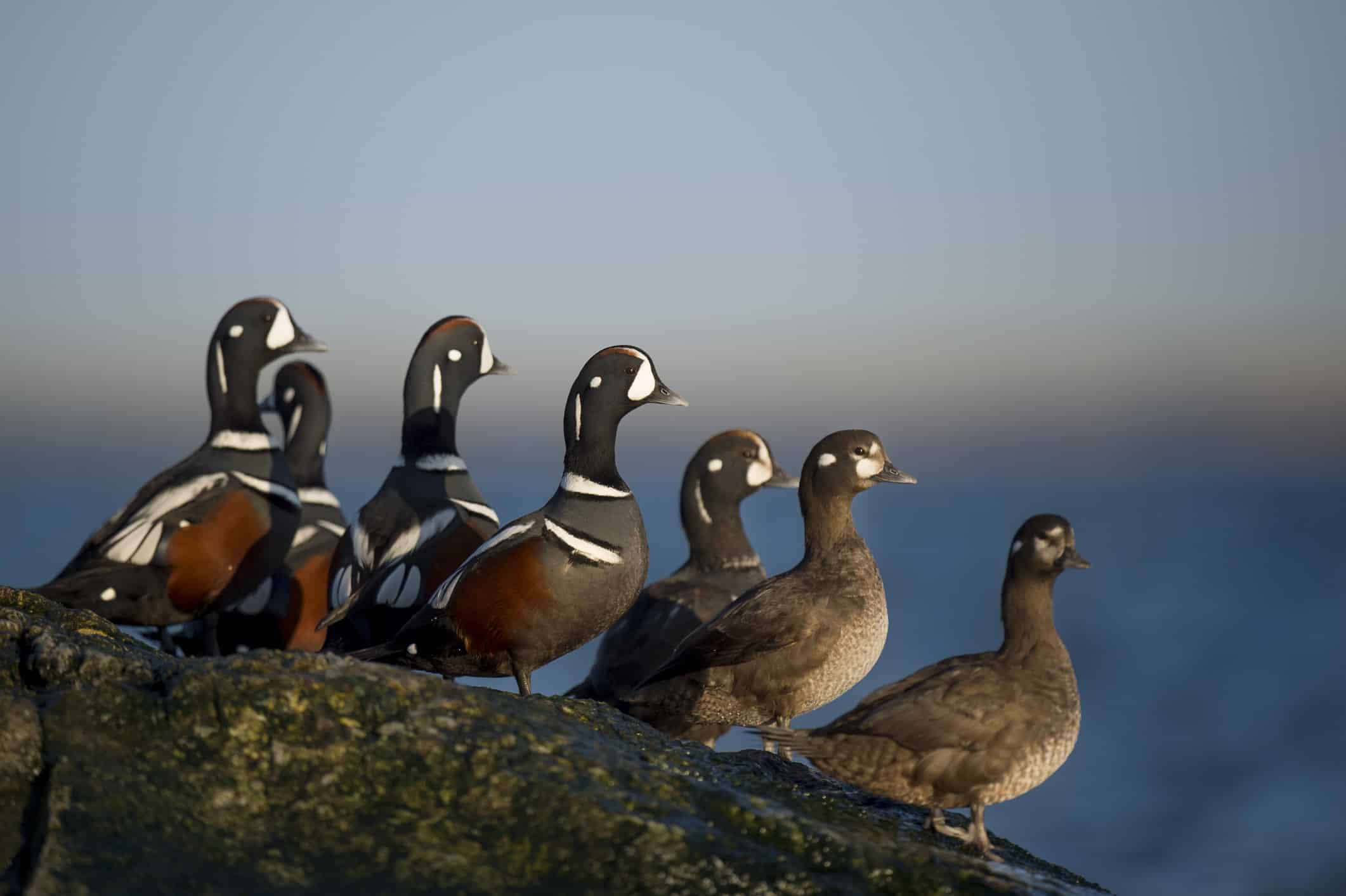There are around 1800 migrating bird species on the planet, and a sizeable portion of these species live in the Americas. This means they traverse the American continents on journeys of varying lengths and directions based on the species in question. What is the Pacific Flyway? Why it’s important and the birds that use it are explained in detail.
What Is the Pacific Flyway?
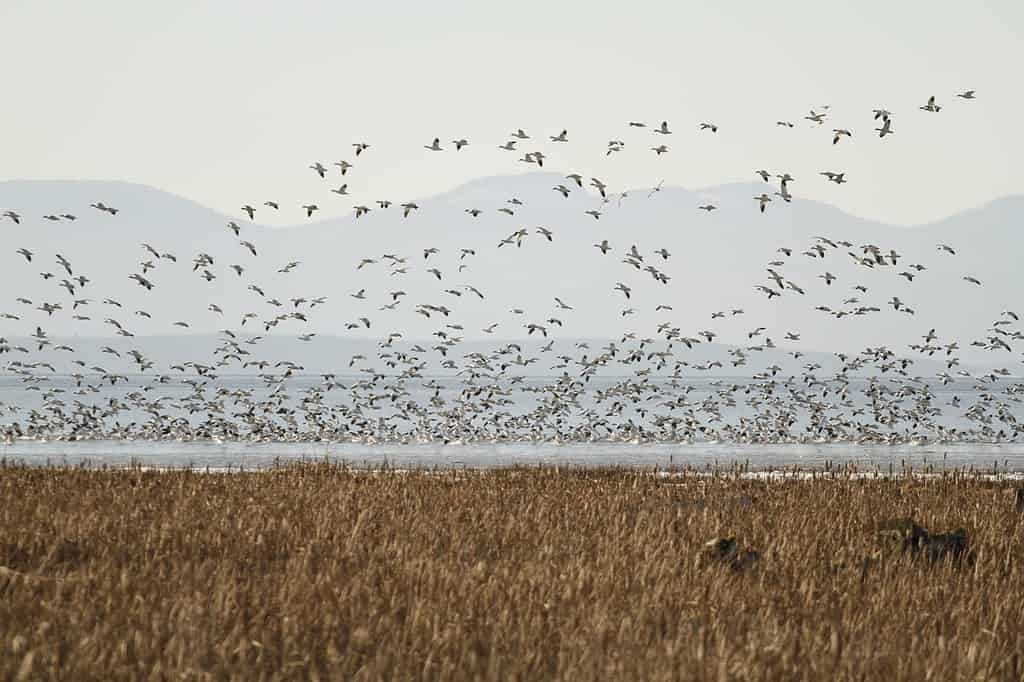
In the Western Americas, a 5000-mile-long corridor called the Pacific Flyway is used by migrating birds.
©ShayneKayePhoto/Shutterstock.com
The Pacific Flyway is a huge migratory bird corridor of the Americas over 5000 miles long. It stretches from north to south along the Pacific Coast from Alaska down to Patagonia. However, birds along the Pacific Flyway are not contained just to the coastal states.
The states in the USA included in the Pacific Flyway are on the west side of the Continental Divide. These states include Wyoming, New Mexico, Montana, Colorado, Washington, Utah, Oregon, Nevada, Idaho, California, Arizona, and Alaska.
Why Is the Pacific Flyway Important?
The Pacific Flyway is important because over a billion birds rely on it every year to travel to needed destinations. Birds that use this flyway are following ancestral routes that untold generations have traveled before them.
Despite the importance of the Pacific Flyway, this migratory path is under threat. As a result, just a fraction of the birds that used to traverse this area a century ago are still around to use it today. Climate change, lack of food resources, drought, and habitat loss contribute to its degradation. Conservation efforts are underway to restore the Pacific Flyway and maintain its sustainability, however, this movement is a work in progress.
Birds That Use the Pacific Flyway
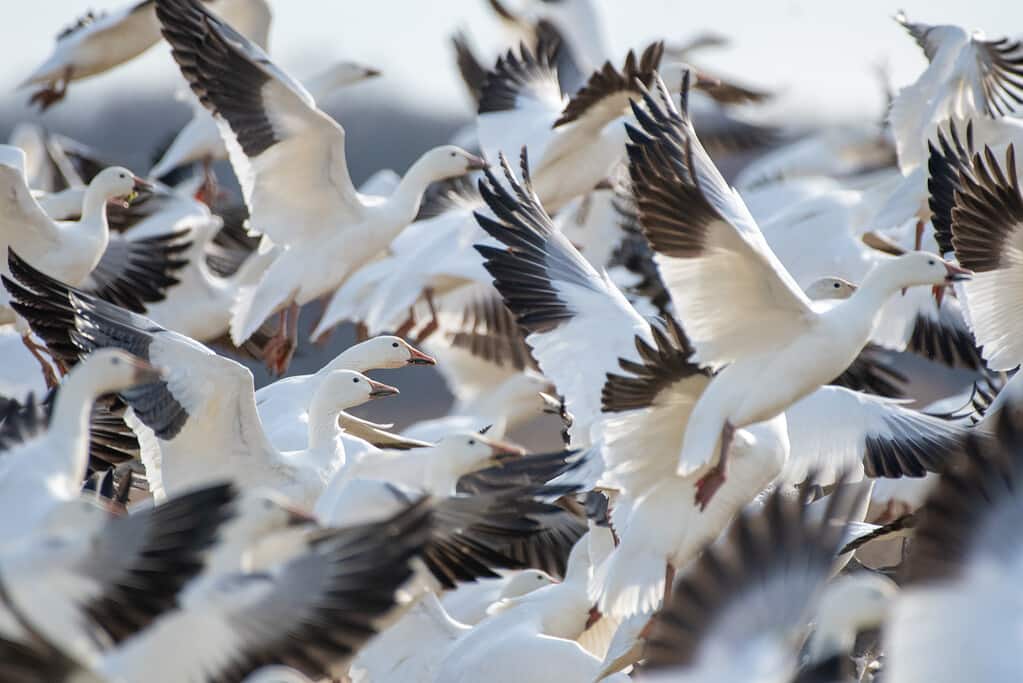
Snow geese are one of the species that rely on the Pacific Flyway.
©robert brown/iStock via Getty Images
Not every type of migrating bird that uses the Pacific Flyway travels the entire length. Some birds utilize certain portions in search of suitable overwintering sites and following food resources during season changes.
Every year, the birds that use the Pacific Flyway do so in a way that mirrors the year before. They’re so predictable that bird hobbyists and scientists are sometimes able to predict the exact day that a certain species will show up at a particular location.
Some of the birds that use the Pacific Flyway include:
- American Avocets (Recurvirostra americana)
- American Wigeons (Mareca americana)
- Black-Bellied Whistling Ducks (Dendrocygna autumnalis)
- Black Necked Stilts (Himantopus mexicanus)
- California Brown Pelicans (Pelecanus occidentalis californicus)
- Canvasback Ducks (Aythya valisineria)
- Cinnamon Teals (Anas cyanoptera)
- Dunlins (Calidris alpina)
- Elegant Quails (Callipepla douglasii)
- Harlequin Ducks (Histrionicus histrionicus)
- Lesser Scaups (Aythya affinis)
- Mexican Ducks (Anas diazi)
- Mourning Doves (Zenaida macroura)
- Northern Pintails (Anas acuta)
- Orange-crowned Warblers (Oreothlypis celata)
- Pacific-Slope Flycatchers (Empidonax difficilis)
- Red Knots (Calidris canutus)
- Ruddy Ducks (Oxyura jamaicensis)
- Rufous Hummingbirds (Selasphorus rufus)
- Sanderlings (Calidris alba)
- Semipalmated Plovers (Charadrius semipalmatus)
- Snow Geese (Anser caerulescens)
- Swainson’s Thrushes (Catharus ustulatus)
- Townsend’s Warblers (Setophaga townsendi)
- Wilson’s Warblers (Cardellina pusilla)
- Western Sandpipers (Calidris mauri)
- Western Snowy Plovers (Charadrius alexandrinus nivosus)
- Western Tanagers (Piranga ludoviciana)
- White Rumped Whimbrels (Numenius phaeopus)
- Yellow Warbler (Setophaga petechia)
- Yuma Ridgeway Rails (Rallus obsoletus yumanensis)
How California Is Important to the Pacific Flyway
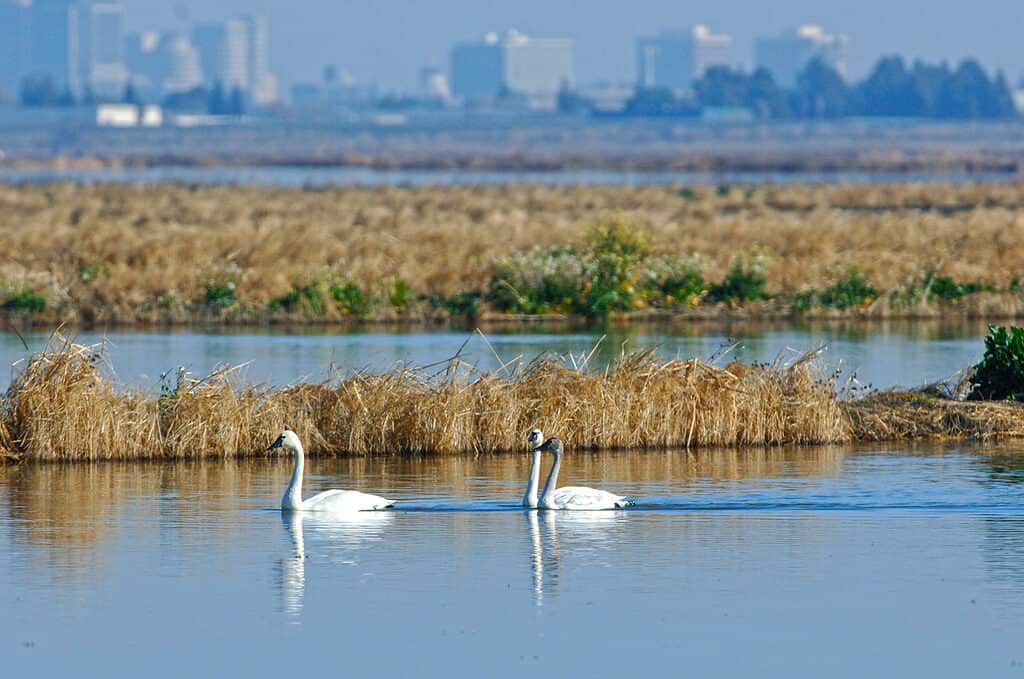
The wetlands of the Sacramento Valley are vital to the Pacific Flyway.
©iStock.com/johnrandallalves
California is a major hotspot for birds migrating along the Pacific Flyway. However, habitat destruction in the state has ruined over 90 percent of ancestral wintering lands for these birds. As a result, some species are in danger of being irreversibly affected by this habitat loss.
The Sacramento Valley in California hosts 60 percent of the migratory bird population every year with a sizeable portion using it as their wintering location. This means that the rice fields and wetlands of the Sacramento Valley are arguably the most important part of the entire Pacific Flyway. Another 15 percent of the waterfowl in migration use the Sacramento-San Joaquin Delta as a refuge along their journey.
The Salton Sea is also a vital spot along the Pacific Flyway for millions of birds. Historically, the area flooded and dried periodically for thousands of years as part of the wider Colorado River Delta.
Today, the Salton Sea is a permanently flooded riverbed after flood control measures failed and grows saltier each year due to evaporation. It’s California’s largest inland lake, and it’s a critical rest stop for birds traveling to and from Central America and Mexico. It is located in the desert, a rare oasis offering resources to weary birds that need a rest.
In recent years, the Salton Sea has become smaller and saltier almost to the point of unviability. The lack of water leads to toxic dust from the exposed playa, and the salt content of the water is killing the fish that provide the food migrating birds need. If the Salton Sea is lost as a natural resource for migratory birds, over 400 species reliant on this oasis will be at risk.
How Many Migratory Flyways Are There in North America?
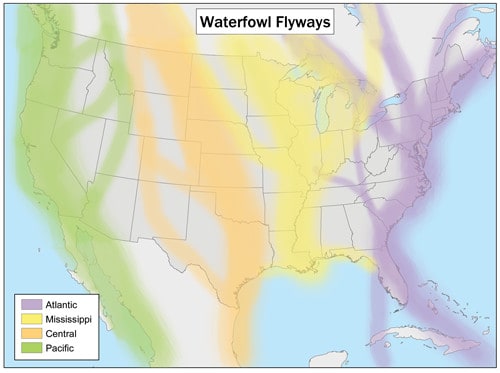
There are 4 major flyways in the United States.
©This image or recording is the work of a U.S. Fish and Wildlife Service employee, taken or made as part of that person’s official duties. – Original / License
There are 4 main flyways in North America. These four flyways are the Atlantic Flyway, the Mississippi Flyway, the Central Flyway, and the Pacific Flyway. Over half of the migratory waterfowl in North America traverse the Central Flyway while 40 percent of bird species on the continent take the Mississippi Flyway.
The U.S. Fish and Wildlife Service uses these 4 distinctions to help manage and preserve the flyways and the habitats needed to maintain their viability. Canada and Mexico also participate in regulatory aspects of North America’s sections of the flyways.
Over 4 billion birds migrate via one of these flyways every year in North America. There is a species crossover between the flyways with the same kind of birds traveling in different corridors. Other species buck the flyway system altogether and create unique circular navigational paths that utilize pieces of all of the flyways on the continent.
Thank you for reading! Have some feedback for us? Contact the AZ Animals editorial team.

